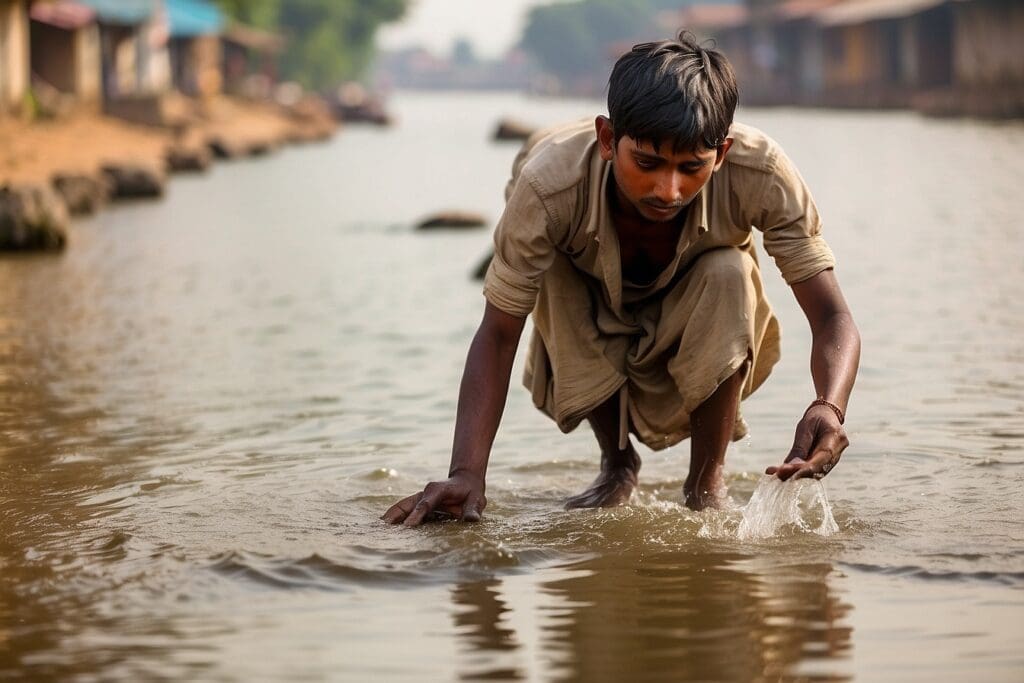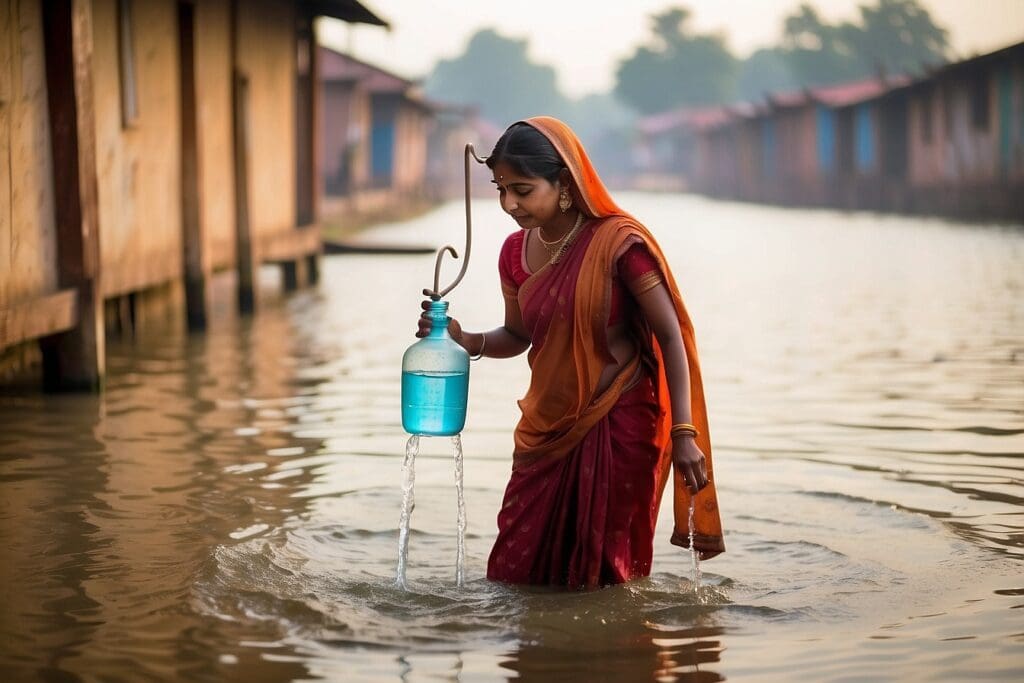Jharkhand, India: Where insurgents and alternative energy systems intersect
By the year 2030, India will pass China as the world’s most populous nation. Its population at that time is estimated to be 1.53 billion people. Currently, India’s 1.15 billion residents contribute to a disproportionately low six percent of the world’s CO2 emissions, but that number is “expected to triple within the next 20 years”.1 And in spite of the global financial crisis, India’s economy looks set to continue to grow by at least six percent a year for the foreseeable future. It is precisely this type of growth that is responsible for reducing the percentage of Indians living in poverty from 40% to 25% over the last 15 years.2 Each year, as these millions of Indians leave poverty, millions more see their income rise to the 200,000 rupees per year threshold necessary to join the “middle class”. In 2009, this middle class consists of over 50 million people; that number is expected to grow “ten-fold by 2025”.3 India’s emissions levels will soar because of its sheer number of people, as more than one and a half billion people are certain to emit astounding levels of CO2, regardless of how modestly they live. This vision of a carbon-choked future has not been ignored—in Jharkhand, one of India’s poorest States, four villages have taken concrete steps towards a greener future. Their accomplishment: installing solar powered water wells.

Much of Jharkhand’s drinking water is “very rich in minerals such as iron, calcium, magnesium, copper and arsenic, thus making it unsafe for drinking”.4 One part burden, one part asset: Jharkhand’s abundant minerals make for unsafe drinking water but their export brings much needed cash into the state. Unfortunately, much of this cash is siphoned to corrupt officials or simply lost in the vast intestines of Jharkhandi bureaucracy. Both school and “government buildings remain under-, even un-staffed”5 and Jharhkand’s 59.6% literacy rate sits below the Indian national average of 66%.6 With an inadequate public education system, many of Jharkhand’s young males have found guidance from India’s Maoist insurgents, the Naxalites, who have turned Jharkhand into a fruitful recruiting region by offering salaries “çomparable to what is paid some government employees”.7 While the Naxalite specter haunts Jharkhand, several of its communities have shown that neither insurgents, nor poverty, nor an impotent local government is an insurmountable hurdle on the track towards a sustainable future.
In the past decade, the Jharkandi villages of Binkarva, Chichikala, Chichikhurd, and Kanabanandh have all installed solar water pumps to bring potable water into the homes of villagers. The water systems were installed by the Hindustani Petroleum Corporaton Limited, or HPCL. A Fortune 500 company, the HPCL has installed major wind power systems in the states of Maharashtra and Rajasthan in addition to its work in Jharkhand. The cost to install a system that can supply 40,000 to 50,000 liters of clean water each day is RS 550,000, or about $11,000 USD. 8
Excepting routine maintenance, such a system is largely cost-free: once installed in a shade-free location, a large photo-voltaic panel converts solar radiation into electricity, which impoverished villagers would otherwise have great hardship in obtaining. Once converted, the electricity draws water out of a “foot-wide hole… dug to a depth of 300 feet”.9 All that is left for the villagers to do is collect the safe water from one of the several tanks to which it has dispersed.
As with most successful green initiatives, the appeal of these solar powered wells is economic as well as environmental, and the agricultural productivity in each of the villages has increased significantly. For one, the women of the village no longer need to make the long and arduous journey to draw small amounts of water from wells, or nullahs. Time once lost in this fashion is now regained working in the fields. The increased availability of water has also increased the percentage of arable land, meaning that many families now have a surplus of food which can be taken to local markets and sold. With improved household income, more children are freed from farm work and able to attend school. In a region where frustrations over living standards drive many to the radical doctrine of the Naxalites, this increase in education is a positive development indeed.
However, along with these positive consequences come a set of warnings. Paramount among these is that villagers must learn to moderate their use of groundwater, lest they deplete it entirely. “Unlimited” access to groundwater is a new phenomenon in these Jharkhandi villages, but looking fifteen hundred kilometers westwards to the increasingly dry state of Punjab provides a powerful example of the risks of “free” water. Punjab, the so-called “Bread Basket of India”, produces “20% of the nation’s wheat, 11% of its rice, and 11% of its cotton” despite constituting only “1.5% of its geographical area”.10 It is estimated that “India’s power sector loses as much as $9 billion dollars a year subsidizing farmers’ use of electric pumps”; Punjab has been the foremost beneficiary of these subsidies. Sheltered from the consequences of unfettered energy access, many farmers “run their pumps with abandon, further depleting water tables”.11 The result: water levels in Punjab have dropped an astonishing “ten meters since 1973”.12
Maintaining a basic standard of living is important for all of India but imperative for Jharkhand, whose political stability hinges upon it. For now, solar water pumps have succeeded in increasing the quality of life for the villagers of Binkarva, Chichikala, Chichikhurd, and Kanabanandh, but education about responsible water use must be emphasized if they are to face a future different from those in Punjab. The rise of green energy systems in the developing world seems a wonderful fairytale, but the potential for a nasty ending looms. For now, Binkarva, Chichikala, Chichikhurd, and Kanabanandh stand as bright green spots in a land blighted Red. Here’s to hoping that increased educational measures make for a happy ending.





